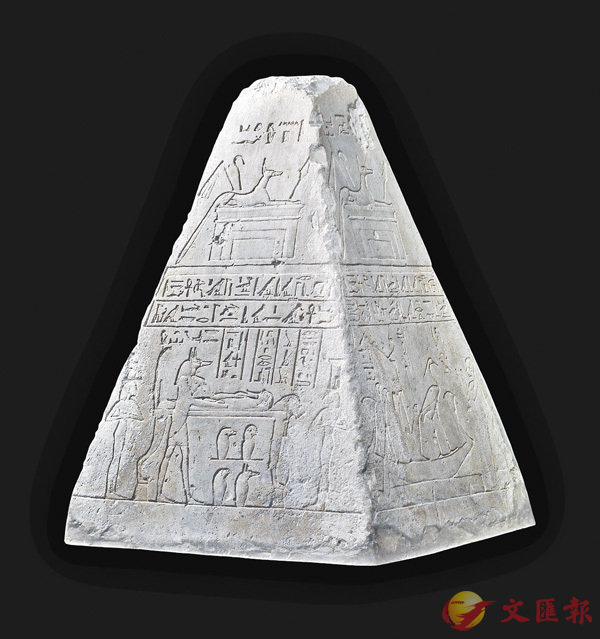
烏賈霍的頂角錐石 Pyramidion of Wedjahor
第二十六王朝(公元前664年至525年) 26th Dynasty(664-525BC)
常見於著名王族陵墓的金字塔形狀,亦會被用於一些私人的墓葬建築,這些墳墓通常會以泥磚興建,頂部都會放上一塊名為頂角錐石的壓頂石。錐石四邊都刻畫了紋飾,可以讓墳墓的主人與太陽神拉和喪葬之神歐西里斯聯繫起來。死者的木乃伊則會由胡狼首造型的防腐之神阿努比斯放在棺架之上。
圖像由大英博物館託管會提供。
The pyramid shape used for some famous royal tombs was also adopted for private funerary structures. They were usually built in mud brick and topped by a capstone, called a pyramidion. This one is decorated on all four sides and connects its owner to solar and funerary gods, such as Ra and Osiris. The deceased's mummy lies on a bier. It is being prepared by the embalmer god Anubis, shown with a jackal's head.
Images in courtesy of the Trustees of the British Museum.
■資料提供︰香港科學館
Hong Kong Science Museum
■展期:即日至2017年10月18日
逢星期三見報

